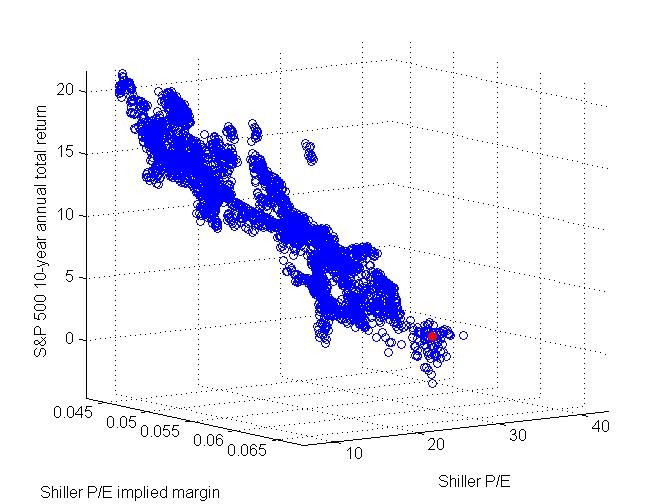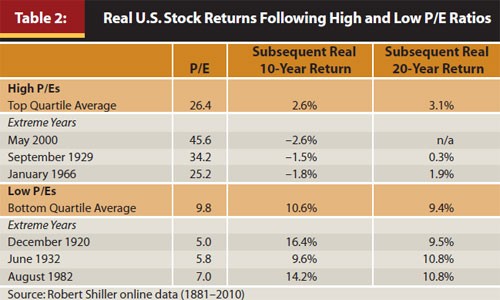A Remarkably Reliable Way To Predict PostEarnings Price Moves
Post on: 30 Май, 2015 No Comment

For the past several months, I have been working on a model to predict the direction a stock will move after the company reports its quarterly earnings. The underlying assumption is that the level of expectations leading up to the announcement is more important than the actual numbers that the company reports.
If expectations are unusually high going into the announcement, something in the announcement invariably seems to disappoint investors, and the stock price usually falls, regardless of how well the company does compared to analyst expectations (or even whisper numbers).
The disappointment might be based on something other than earnings — it could be revenues, margins, or guidance, or something entirely different, like an expected dividend boost that didn’t come through. In any event, when expectations are through the roof, the chances of some kind of disappointment and a lower stock price are increased dramatically.
Surely, anyone who has invested in stocks over the years has had the euphoric experience of reading about how your favorite company exceeded earnings by a wide margin, only to be devastated the next day when the stock price fell in response the wonderful news. It is one of the most painful times in our investment life, and the pain seems to be so much greater than the joy of seeing the stock move higher.
This report will explain how to measure the level of expectations so that you can better predict what will happen to the stock price once earnings are announced. But first, I would like to report how well my model has worked so far. Check out the full results .
Here are the last eight earnings plays that I made in a brokerage account I carry out for my Terry’s Tips newsletter subscribers:
Company Gain
- JPMorgan (NYSE:JPM ) 38%
- Google (NASDAQ:GOOG ) 39%
- eBay (NASDAQ:EBAY ) 7%
- Apple (NASDAQ:AAPL ) 39%
- Seagate Technology (NASDAQ:STX ) 6%
- Green Mountain Coffee (NASDAQ:GMCR ) 18%
- Deere & Company (NYSE:DE ) 15%
- Sina Corporation (NASDAQ:SINA ) 19%
The average gain was over 22% after commissions and there was not a single loss. I reported on many of the option plays I made in advance of making them with Seeking Alpha articles — you might see how the model measured expectation levels prior to the earnings announcement :
Here are the variables I check out before making a determination of whether expectations are unusually high (or low) leading up to an earnings announcement and what the stock price is likely to do after the announcement:
1. Stock price action in the most recent weeks.

If the stock has moved steadily higher for the month leading up to the announcement, and particularly for the last week, expectations might be escalating. Conversely, if the stock has moved lower leading up to the announcement, expectations might be low and the stock might move higher even if the company merely matches analyst estimates.
2. Whisper numbers vs. analyst estimates.
If whisper numbers are significantly higher than analyst estimates, it is clear proof that expectations are high. There is a challenge here to check out whisper numbers from a reliable source (it is best for me not to disparage anyone who publishes whisper numbers, but I have found that there is wide range of reliability from the various sources).
3. Recent post-earnings price changes compared to earnings results (is there a pattern for that company)?
Some companies display remarkably consistent patterns of meeting or beating estimates, and subsequent stock price changes. For example, JPM beat estimates handily for four consecutive quarters but the stock fell half the time after they reported results, and CRM crushed estimates every time and the stock rose every time (by an average of 6.6%). Some of these patterns can be counted on to persist.
Another pattern has been companies whose stock price didn’t fluctuate very much regardless of whether they met, fell short of, or exceeded estimates. These companies seem perfectly suited for calendar spread strategies or buy-write strategies (benefiting from the escalated implied volatility of the weekly options).
4. Current RSI levels.
If a company is in a very overbought condition leading up to an announcement, it might be an indication of extremely high expectations, although overbought readings have not been as reliable as oversold conditions that demonstrate that expectations are unusually low.
5. Overwhelming positive (or negative) comments on various blog posts.
I always check out recent articles on the company published by Seeking Alpha and especially the comments at the end of the articles, as well as blog posts on other financial forums. For the most part, I consider this commentary as contrary indicators. The people who seem to be the most impassioned about loving or hating a company also seem to be wrong most of the time.
In addition, I check out recent hedge fund activity (are hedge funds buying or selling the stock?) to get a better handle on whether the stock is likely to rise or fall after the announcement. While hedge funds are not always right, they can be counted on to have conducted some serious due-diligence work before making a decision to commit or divest, and they have far more resources at their disposals than any individual could hope to have. It seems to be a good idea to piggy-back on their work, and to join them in their assessment of the company.
I have found that actual hedge fund cash commitments is a much better indicator of future stock performance than anything the analysts say. For example, for the last four quarters, analysts who publish estimates for SalesForce.com (NYSE:CRM ) have been off by an average of ten times earnings per share for the past four quarters (e.g. they estimated an average of $.03 and actual earnings were over $.30). It is hard to give the analysts any credence when they can consistently be this far off base.
One shortcoming of the model is that it doesn’t always provide predictive value. In one article I reviewed the expectation levels for eight reporting companies and concluded that none of them displayed unusually high or low expectation levels so that my model could not help in predicting the post-earnings stock price move — Predicting The Direction Of Next Week’s Earnings-Reporting Companies .
I have found that if you can muster the discipline to check out each of the above five indicators carefully, you can conclude that expectations are unusually high, about average, or unusually low, and then make a decision on what action to take.
Many people prefer a buy-write strategy (or sell-write) to take advantage high option prices, choosing to buy or sell short the stock based on the likely direction the stock price might take based on the expectation level going into earnings, and then selling slightly in-the-money puts or calls against their stock position. If they are right, they will end up not owning stock (or being short stock) when the weekly or other short-term options expire, and they will make a nice short-term gain for their efforts.
My personal preference is to create an options strategy that will make a gain if the stock moves by as much as 5% in the direction I don’t believe it is headed or as much as 10% in the direction I expect it to move. It is also possible to construct positions that will make a gain no matter how much the stock might move in one direction (but not both directions). I don’t have to wait long for the stock price changes to take place because I deal exclusively with companies that have weekly options available, and I exit my positions on the Friday after the announcement.
If you use calendar or diagonal spreads (as I do), it is extremely important to check out the implied volatility (IV) of the company’s options in a non-earnings time period. As soon as the announcement is made, IV for the entire option chain will implode. While it will fall the greatest for the shortest-term options, no matter what month you choose for your long side, IV will inevitably fall for those options as well. It is crucial to incorporate the expected IV drop in your graphing model before placing your spread trades.
With eight consecutive winning earnings plays, either I am extremely lucky or I have come up with a model that can be counted on to provide a better idea of what the stock will do after an earnings announcement. Next week, we may learn more when my ninth attempt is played out — How To Play The Abercrombie & Fitch May Earnings Announcement .
Disclosure: I have no positions in any stocks mentioned, but may initiate a short position in ANF over the next 72 hours. I wrote this article myself, and it expresses my own opinions. I am not receiving compensation for it (other than from Seeking Alpha). I have no business relationship with any company whose stock is mentioned in this article.
Check out Seeking Alpha’s new Earnings Center














